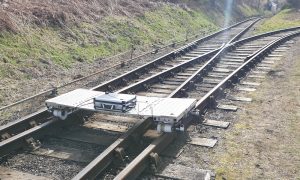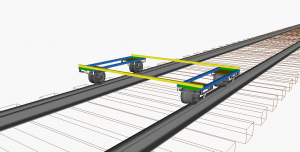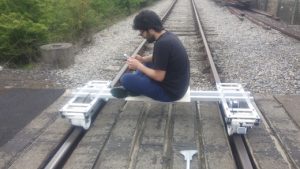
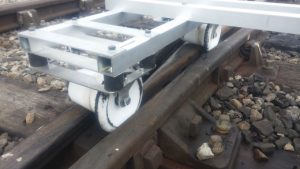
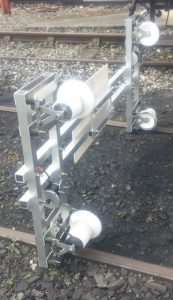
The structure of the Track Buggy needs to be strong despite the portability requirements.
The Track Buggy is intended as a general-purpose, semi-autonomous railway vehicle that can be transported and operated by a single person. It has four acetal wheels with a P8 profile but a smaller diameter than required by the railway vehicle standard (although check rail clearance is maintained). Early prototypes have been tested on railway track and this design and arrangement of wheels has proved effective.
Because the design is general-purpose, it lends itself to a variety of tasks – a track inspection machine, for example, or a transportation platform – that could contribute to a more effective railway. In addition, it is compact and lightweight, and safe and easy to use.
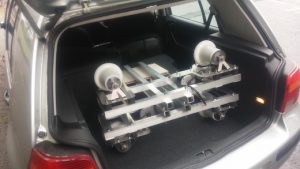
The aim of the project is to design, make and test a semi-autonomous general purpose railway vehicle that one person can transport, assemble and use.
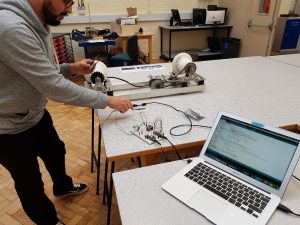
Development of a speed sensor for the driven wheels of the Track Buggy, testing different measurement methods with Arduino and Teensy.
Resources

